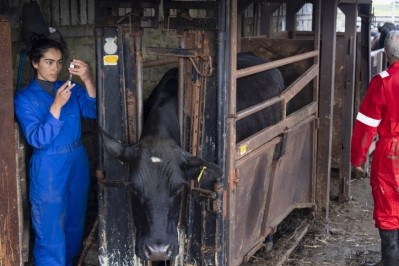USDA survey underscores critical role of federal program in reducing US food insecurity

USDA’s Household Food Security in the United States in 2023 report is based on data from a survey conducted by the US Census Bureau, a supplement to the monthly Current Population survey. Sponsored by the USDA’s Economic Research Service (ERS), the survey included 30,863 US households with responses from one adult per household about food insecurity experiences in 2023, such as skipping meals or an inability to afford balanced meals.
The report presents data around household food security, food expenditures and the use of federal food and nutrition assistance programs. USDA determined that food insecurity’s prevalence in the US is based on a variety of factors from household circumstances and the economy to federal, state and local policies.
While most US households considered themselves food secure in 2023, the report highlighted that food insecurity (defined as households with low and very low food security) was statistically significantly higher in 2023 at 13.5% of households compared to the 12.8% (17 million households) in 2022, 10.2% (13.5 million households) in 2021 and 10.5% (13.8 million households) in 2020.
In 2023, 5.1% (6.8 million households) experienced “very low food security,” which is statistically similar to the previous year of 5.1%. During the peak of the pandemic when government assistance for food increased, 2021 saw a significantly drastic difference with 3.8% (5.1 million households) and 3.9% (5.1 million households) in 2020 experiencing a “more severe range of food insecurity,” where household members reduced their food consumption and a disruption in habitual eating patterns due to limited resources, USDA reported.
Households with food insecurity among children also increased in 2023 with 8.9% (3.2 million households) compared to 7.6% (2.9 million households) in 2020. Households with very low food security among children experienced hunger, skipping meals and not eating for a whole day due to a lack of resources, namely money, for food.
USDA, advocacy groups express opposition to budget cuts on federal nutrition programs
In May, the House Agriculture Committee’s Farm Bill proposal sought to cut roughly $30 billion in food assistance over the next decade by limiting future updates to the Thrifty Food Plan, which sets the baseline for Supplemental Nutrition Access Program (SNAP) benefits.
USDA Secretary Tom Vilsack expressed that the findings in the survey “are a direct outcome of Congressional actions” on food insecurity and expanding programs like the Child Tax Credit or SNAP helped “drive the poverty rate down to a record low of 8% in 2021.”
He added that food insecurity among households remained steady year to year and that programs like the National School Lunch Program, SNAP, Infants and Children (WIC), among others “must be continued and strengthened.”
Vilsack continued, “This report reaffirms that proposals to cut food assistance—including SNAP in the next Farm Bill—are misguided and out of step with the reality of working families.”
Advocacy groups like the Center on Budget and Policy Priorities (CBPP) and The Center for Law and Social Policy (CLASP) have expressed strong opposition to these cuts, arguing that they undermine efforts to address food insecurity in the US, especially for vulnerable populations.
These cuts could make healthy food access more difficult for low-income households, as benefits would not keep up with rising food costs or updated nutrition standards, according to the Center on Budget and Policy Priorities.
Last year, the Biden Administration signed H.R. 6363 (Further Continuing Appropriations and Other Extensions Act, 2024) into law which extends the 2018 Farm Bill and allows authorized programs to continue through Sept. 30, 2024.
According to the Congressional Research Service’s report published in February, programs with annual funding like SNAP, which have mandatory spending but are not fully covered by the Farm Bill, can continue if Congress passes an appropriations bill or a temporary funding extension.





















